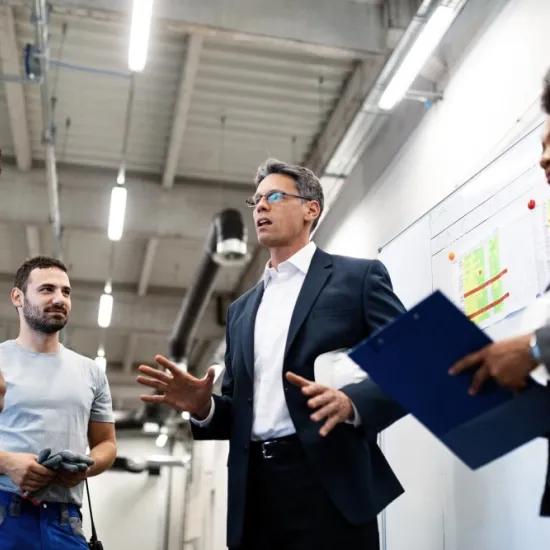De Meyer NV is specialised in the design, production, maintenance and repair of mechanical constructions and machines. The family business serves very diverse markets in equally diverse projects. The company has been growing strongly for several years now and wants to shorten the lead times for its ever-increasing number of projects.
The various orders received by De Meyer NV are fully tailored to the needs of customers from many sectors. The company has been steadily expanding its activities for three generations - and the fourth has already started. This meant moving from Sint-Niklaas to a new, larger, modern location in Temse in 2009.
The company also decided to develop its own strategy, based on two platforms. The first platform covers the sectors for which the company works, grouped into three market segments, namely traditional industry, public infrastructure and offshore. New sectors, such as renewable energy, are regularly considered and added to the portfolio. The second platform consists of the work that the company carries out for the various customers, namely project work, supply and overhaul & repair. As a result, contact with customers is both regular and wide-ranging.
Trialling QRM with QROC
The strategic choice for a wide range of activities has already shown its worth during the COVID-19 epidemic: De Meyer NV experienced only a limited setback. Despite this, there was still room to optimise production. For example, there was the need to cope with 'disruptors' - sprint orders that cause unrest and delays through the entire production process. In its search for a solution, the company came across the principles of quick response manufacturing (QRM).
Carl Bosteels, responsible for innovation and ICT at De Meyer, was the first employee to attend a workshop on 'Quick Response Office Cells' (QROC) in 2018, given by QRM creator Rajan Suri and organised by Sirris. By introducing multidisciplinary QROCs for each market segment, some order processing issues could be solved quickly. Not only did all the employees become more involved, but communication lines also became shorter, collaboration improved and flexibility grew thanks to cross-training. Three QROCs are now active.
Step-by-step towards QRM in production
Having realised that QRM is applicable and, above all, useful, the company was ready for the next step. Several employees, including the manager Dirk De Meyer, followed the QRM Silver course and looked for the best place in production to start the first QRM pilot project.
To set up the first QRM cell, a working group was set up that analysed the various production flows and disruptors and used this to propose various scenarios. The QRM pilot project immediately tackled the production bottleneck: the biggest disruptors in the existing flow, which are usually urgent 'sprint orders' for overhaul & repair.
For the pilot project, this group limited itself to projects for industry with less than 500 budgeted working hours. These orders are separated from the other flows and then processed by a QRM cell with seven employees. To this end, the layout of the workshop was also reviewed. However, the layout could only be adapted to a limited extent because some machines are anchored. The QRM cell operates largely autonomously and divides and assigns the tasks itself. The QRM cell members have since put a great deal of effort into cross-training to increase their flexibility. The company also makes full use of digital dashboards to track progress and detect obstacles in a timely manner.
One important step was to communicate extensively about QRM across the entire organisation. To do this, information sessions were organised for small groups from different departments in order to build support for QRM in the workplace.
Successful pilot project
Profiles were drawn up around which the QRM cell team could be assembled and internal vacancies posted. The resulting multidisciplinary team received - and still receives - the requisite training, coaching and adjustment, after which the team skills were systematically introduced, including consultation, planning, self-management and cross-training. The cell not only takes on urgent sprint orders for overhaul & repair but is now also used for other projects.
The first results soon became apparent. Those involved were positive about the new way of working and employees outside the cell were also satisfied. There was less disruption caused by sprint orders and De Meyer has already received several positive reactions from customers. Communication with the sales department also improved greatly. Productivity also increased and the average lead time has already fallen significantly.
Deepening and expansion
Going forward, De Meyer is thinking of further developing the QRM cell by even more interactive collaboration and further cross-training. Preparations for setting up a second QRM team are currently underway and, in the longer term, the company aims to integrate QRM into the general corporate culture.
The company wants to continue to communicate intensively about QRM - both internally and with its customers - and the suppliers also want to get involved as the relationship with them also affects the total lead time.
(Source picture: De Meyer)




